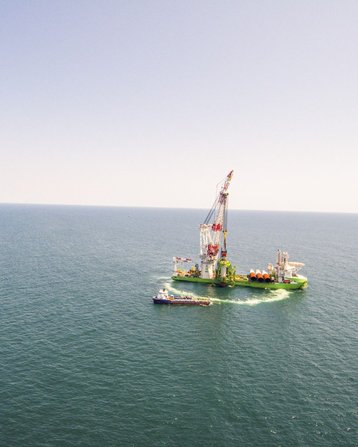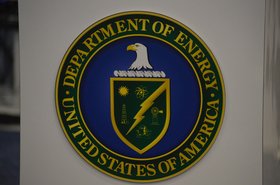Dominion Energy looks set to deliver its flagship offshore wind farm, Coastal Virginia Offshore Wind (CVOW), by the end of 2026 - despite strong headwinds from the new Trump administration.
In a project update released earlier this week (3rd February), Dominion stated that the project will play a crucial role in its “all-of-the-above” approach to energy generation and will support “America’s AI preeminence.”
In its latest Integrated Resource Plan (IRP), Dominion projected a more than 100 percent increase in energy usage over the next 15 years, driven primarily by data center growth. The IRP envisioned 80 percent of this generation to come from low-carbon sources, demonstrating the importance of large offshore wind in its approach.
In addition, Dominion contended that the project is necessary to ensure grid reliability, economic growth, and meet growing energy demand across Virginia and North Carolina. The company also claims that the project has bipartisan support and strong backing from local communities.
When complete, the project is expected to consist of 176 turbines with a nameplate capacity of 2.6GW. It is being constructed 23.5 nautical miles off the coast of Virginia Beach, with its lease area covering about 2,135 acres.
According to the update, the project is 50 percent complete. Dominion plans to erect the first turbine in mid-2025 and complete the project's onshore infrastructure by early 2026.
However, project costs have increased to $10.7 billion from $9.88bn, a nine percent rise.
Since the inauguration of President Trump last month, the future of offshore wind has looked bleak. The President has already signed a series of executive orders that have temporarily withdrawn federal waters for consideration for offshore wind development and also paused issuing new permits, approvals, and loans for all onshore and offshore wind projects.
Offshore wind can only be built on federal waters, so with it off the table, the future of the US offshore sector is in flux.
Under the Biden administration, the US had an ambitious goal of 30GW of offshore wind by 2030. In line with that target, New Jersey planned to deploy 11GW of offshore wind by 2040, while New York expected to field 9GW by 2035.
However, the targets are now falling apart. Earlier this week, New Jersey announced it would withdraw support for new offshore wind projects. The New Jersey Board of Public Utilities canceled its fourth offshore wind solicitation, and Shell withdrew from a joint venture developing the 2.8GW Atlantic Shores offshore wind project. Despite Shell's withdrawal, Atlantic Shores has maintained its commitment to developing the project.
There is hope that strong leadership on the state level will facilitate offshore growth within the sector. Speaking to Reuters, Adam Stern, executive director of Offshore Wind California, an industry trade group, said: "As an industry, we're focused and moving forward with what is advancing offshore wind in California, and right now, most of that is occurring at the state level."
However, with only four operational offshore wind farms in the US and another four under construction, the sector looks likely to face increasing problems in the future.




